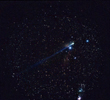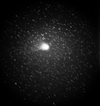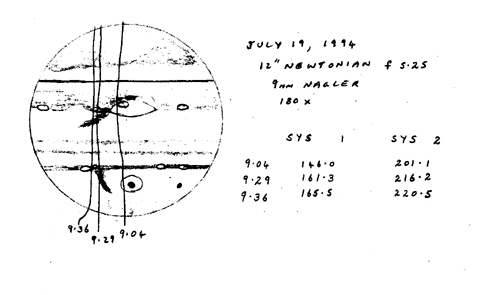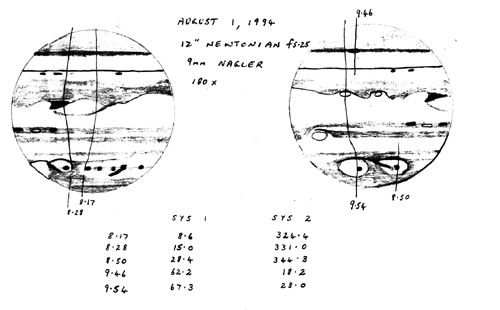1997 was totally dominated by comet Hale-Bopp. Reaching around magnitude -1.5 and displaying 2 long tails, the comet was visible to the naked eye virtually for the entire year! However there were a few other interesting happenings on the comet front that year. One of these was a fantastic increase in the number of comets discovered! The main source of these discoveries was the SOHO spacecraft. Continuously monitoring the Sun, a very surprisingly large number of very faint comets sungrazing were observed. However few of these mini-comets survived perihelion. Another source contributing to the large number of comet discoveries gave an ominous signal to amateur comet hunters:- the ever increasing number of comets labeled LINEAR! As more deep asteroid surveys were coming online, more and more comets were being discovered when they were well beyond visual observation.
Visually, there were several comets visible during the year apart from comet Hale-Bopp. Comet 46P/ Wirtanen reached magnitude 10.5 during February and March although it remained quite close to the Sun, making observation very difficult. Comet 2P/ Encke was briefly visible duning late June/early July, initally as bright as magnitude 7, but fading quickly. The asteroid-come-comet Chiron continude to be visible as a star-like point around magnitude 15. Comet Tilbrook 1997O1 was around magnitude 10 at discovery in late July and was visible for a number of weeks as it faded slowly. Another 10th magnitude Australian discovery in July was comet Tabur 1997N1. **** Comet Meunier-Depouy 1997J2 remained visible as an 11th magnitude object during much of the second half of 1997, as did comet 1997D1 Mueller.
Probably the most interesting of the fainter comets during 1997 was the periodic comet 103P/ Hartley 2. At the beginning of November, this comet was around magnitude 10.5. It brightened steadily, reaching magnitude 8.6 at the beginning of December. My final observation of this comet came on February 2, 1998, when the comet was still at magnitude 9.2. On February 1, the comet drifted past the famous variable star Mira, which at the time was near maximum brightness. The result was an interesting photograph.
Comet 55P/ Temple-Tuttle
1998 was again a fairly busy year for visual comet observers. There were several returning periodic comets visible, along with a number of the new discoveries. One interesting returning periodic comet was 55P/ Temple-Tuttle, the parent comet of the November Leonids. This became visible in the southern hemisphere during January as a 9th magnitude object without tail, low to the north. In subsiquent weeks, is moved south, fading steadily, falling below 10th magnitude 10.5 by the end of March. During late January, I was able to spend a week comet observing at the Chrio observatory, and on January 27, 28 and 29 I was able to observe 11 comets each night. Comet Hale-Bopp was the brightest at magnitude 8.3 with a 2.5 degree tail. Hartley 2 and Temple-Tuttle were 9th magnitude, while Chiron was the faintest at magnitude 15.8. Comet Schwassmann-Wachmann 1 was in outburst at magnitude 12.4 and the periodic comet 59P/ Taylor was magnitude 12.6. 4 comets were 13th magnitude, these were Wolf-Harrington, Kowal 2, Mueller, and Geherls 2. The most difficult object was the periodic comet 128P/ Shoemaker-Holt 1. At magnitude 14.7, it was only visible because it was small and condensed.
During May, the distant comet Meunier-Dupouy 1997J2 again became visible from the southern hemisphere as an 11th magnitude object, and remained visible in larger telescopes for several months.
Comet SOHO 1998J1
The first bright discovery of 1998 was one of the SOHO comets. Originally discovered in SOHO solar images, this comet made a brief, interesting display during late May when it was visible to the naked eye and passed between M42 and the Horsehead nebula.

Unfortunately, like most sungrazing comets, comet SOHO faded quickly and soon disappeared.
Another relatively bright comet discovery was comet Williams 1998P1. The comet peaked at around 7th magnitude at the beginning of September, before rapidly heading northwards and disappearing from the southern sky. Northern hemisphere observers were able to follow the comet well into 1999.
Comet 21P/Giacobini-Zinner made a favourable perihelion passage during November, reaching magnitude 8.2 and displaying a short tail. Following perhelion, the comet faded steadily, falling below 11th magnitude during February 1999.
Comet Lee 1999H1
1999 was a quiet year for visual comet observing, however it marked a major change in how amateurs observed comets. By 1998, moderately priced CCD's were on the market and more and more comet observers were obtaining them. I started experimenting with one in May 1998, and by early 1999 I obtained one of my own. Suddenly, even very faint comets were observable with small telescopes. Even 16th magnitude came to be considered "bright" for a 8" telescope! As a result, many observers, myself included, were switching from visual observation of comets to CCD imaging.
The first comet discovery of 1999 was comet Tilbrook 1999A1. Never a prominent object, it was only around 9.5 magnitude at its brightest and remained close to the Sun and difficult to observe. The brightest comet of 1999 was discovered in April. Comet Lee 1999H1 was around 9th magnitude at discovery, but brightened steadily as it approached perihelion. At its peak during June, the comet was around magnitude 6.7 and displayed a fine tail. During late June the comet was too close to the Sun to observe and following perihelion, the comet had moved into the northern sky.

The next bright discovery was comet Lynn 1999N2. Discovered as a 7th magnitude object during July, comet Lynn was already past perihelion and faded quickly as it headed northwards.
The final periodic comet of the 1990's that I observed visually was another return of the periodic comet 10P/ Temple 2. Although not a favourable as some past returns, the comet still reached magnitude 9.7 during September, and did not fall below 10th magnitude until early December.
The final comet I observed visually in 1999 was an unexpected one. While observing faint outlying globular clusters belonging to the Small Magellanic Cloud, I came across one object that was not on my charts. A careful study showed that the object was clearly a comet at around 11th magnitude! Was this a discovery!!???? Alas not! A phone call to the Perth Observatory showed that this was comet 1999J3 LINEAR, a comet that had been widely observed during October from the northern hemisphere. (mumble... mumble... mumble....)

Other Comets Imaged
























